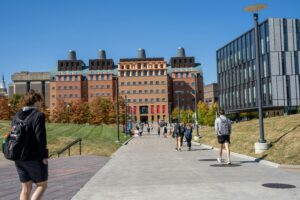College towns, gentrifying neighborhoods getting most tax-sheltered investments

A massive tax break for rich people and corporations, touted as a way to drive prosperity to poor and left-behind places, has instead throughout Ohio driven investments to thriving college towns and areas that are getting richer and whiter, a new Good Jobs First analysis has found.
The new report shows the federal Opportunity Zones program, whose arrival was enabled by a provision of the 2017 Tax Cuts and Jobs Act, has failed to drive new projects to Ohio’s most struggling areas. Though the Zones are notoriously opaque, Good Jobs First was able to analyze more than 1,600 investments made in Ohio between 2020 and 2023 totaling $1.03 billion thanks to a unique disclosure provision of an add-on state incentive.
- Opportunity Zones: Frequently Asked Questions
While the state-disclosed investments may not include all OZ investments in Ohio (because some unknowable share of OZ investors may not have applied for the state’s additional OZ incentive) we find that for those that are disclosed:
- The investments are concentrated in a small number of urban areas, mainly Cleveland, Columbus, and Cincinnati. Indeed, just five cities received 88% of the dollars invested.
- The investments are concentrated in just 120 of the state’s 320 OZs.
- OZs in rural and Appalachian Ohio received almost no investments.
- OZs that have received investments tend to have gentrifying characteristics — becoming whiter and richer.
- Almost 16% of the funds invested have been within one mile of a college campus. College towns often qualified as an OZ not because they are economically depressed, but because their large student populations drive down household incomes.
Taken together, our findings indicate that Opportunity Zones in Ohio have not benefited historically disenfranchised communities that OZ supporters said would gain.
“Our findings confirm other research: Opportunity Zones are not driving investment to places in Ohio that have historically seen little development. Instead, they appear to be windfalls for wealthy people and corporations,” said Anya Gizis, a Good Jobs First research analyst and the report’s lead author. “Ohio and its cities should turn their attention toward economic development strategies that actually benefit historically neglected or disinvested places.”
Opportunity Zones are designated low-income census tracts where individuals or corporations may receive federal capital-gains tax breaks for investing through vehicles called Quality Opportunity Funds (QOF). There are currently 8,764 OZs located in all 50 states, the District of Columbia, and five U.S. territories.
In 2019, Ohio created the Ohio Opportunity Zone Tax Credit, which offers tax incentives for eligible investments in qualified projects located in one of its 320 Opportunity Zones. Under this program, once money is invested in an OZ, the taxpayer is eligible for a non-refundable Ohio tax credit equal to 10% of the amount invested. The program has disclosure requirements, unlike the federal program. Ohio’s disclosure is published in the Department of Development’s annual report.
Although there are proposals to extend and expand the federal program, the report recommends that the program be allowed to sunset in 2026.
Additional transparency and reporting requirements, included in those federal proposals, would not change the underlying problems with the program, which include its limited participation pool (only those with capital gains can access it); lack of community benefits requirements, and its failure to drive investment to the poorest communities, in Ohio and beyond.
Read our report.
Good Jobs First gratefully acknowledges Policy Matters Ohio for collaborating on this project, especially Gavin LaPlace for his census tract-level analysis.
Editors’ note: Good Jobs First is a non-profit, nonpartisan research group focusing on economic development incentives. Founded in 1998, it is based in Washington DC and has staff located in six states.